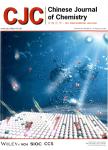Electrochemical Studies of Cytochrome c on Electrodes Modified by Single-Wall Carbon Nanotubes
Electrochemical Studies of Cytochrome c on Electrodes Modified by Single-Wall Carbon Nanotubes作者机构:School of Chemistry and Chemical EngineeringAnhui University Department of Applied Chemistry Dongguan University of TechnologyDongguanGuangdong 523106 China
出 版 物:《Chinese Journal of Chemistry》 (中国化学(英文版))
年 卷 期:2003年第21卷第4期
页 面:436-441页
核心收录:
学科分类:081704[工学-应用化学] 07[理学] 08[工学] 0817[工学-化学工程与技术] 070302[理学-分析化学] 0703[理学-化学]
基 金:theNaturalScienceFoundationofAnhuiProvince (No .990 4612 9) theMajorStateBasicResearchDevelopmentProramofGuangdongProvince (No .c3 190 2 )
主 题:single wall carbon nanotubes modified gold electrode PEM IRRAS QCM
摘 要:Single wall carbon nanotubes (SWNTs) modified gold electrodes were prepared by using two different methods. The electrochemical behavior of cytochrome c on the modified gold electrodes was investigated. The first kind of SWNT modified electrode (noted as SWNT/Au electrode) was prepared by the adsorption of carboxyl terminated SWNTs from DMF dispersion on the gold electrode. The oxidatively processed SWNT tips were covalently modified by coupling with amines (AET) to form amide linkage. Via Au—S chemical bonding, the self assembled monolayer of thiol unctionalized nanotubes on gold surface was fabricated so as to prepare the others SWNT modified electrode (noted as SWNT/AET/Au electrode). It was shown from cyclic voltammetry experiments that cytochrome c exhibited direct electrochemical responses on the both electrodes, but only the current of controlled diffusion existed on the SWNT/Au electrode while both the currents of controlled diffusion and adsorption of cytochrome c occurred on the SWNT/AET/Au electrode. Photoelastic Modulation Infared Reflection Absorption Spectroscopy (PEM IRRAS) and Quartz Crystal Microbalance (QCM) were employed to verify the adsorption of SWNTs on the gold electrodes. The results proved that SWNTs could enhance the direct electron transfer process between the electrodes and redox proteins.



